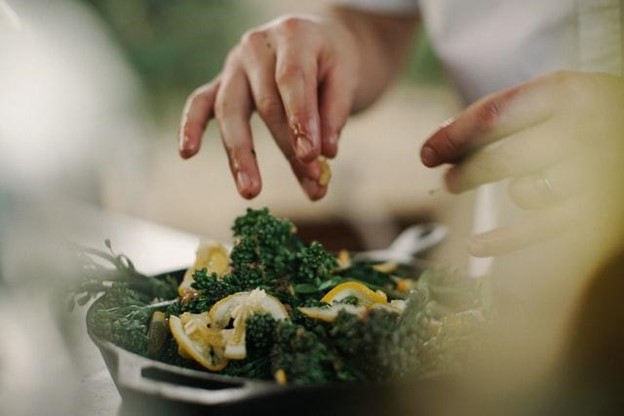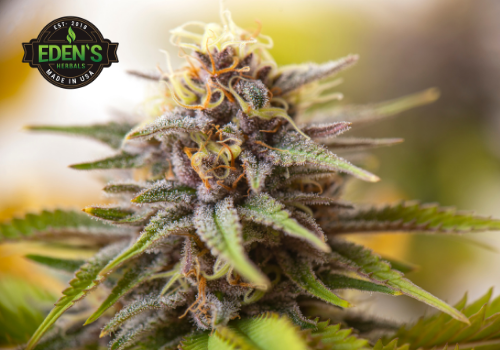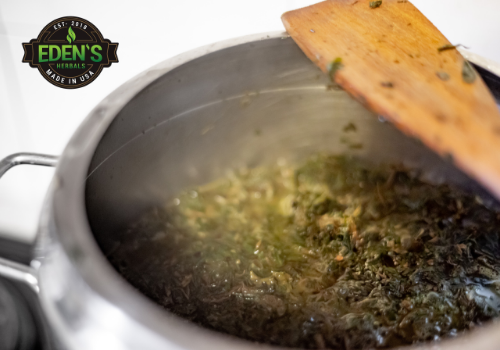 As plant compounds take center stage in the natural medicine space, a growing number of cannabis consumers are taking an interest in both cannabinoids and terpenes. It's worth noting that a large degree of interest in the latter is due to the appeal of terpene-infused food and beverages, which are actively pioneered in progressive states like California and Colorado.
As plant compounds take center stage in the natural medicine space, a growing number of cannabis consumers are taking an interest in both cannabinoids and terpenes. It's worth noting that a large degree of interest in the latter is due to the appeal of terpene-infused food and beverages, which are actively pioneered in progressive states like California and Colorado.
What are terpenes?
Terpenes are naturally occurring aromatic hydrocarbons that are present in virtually all plant life. In nature they provide vital functions throughout a plant's growth cycle, including functions as a repellent against foraging predators, an attraction for pollinators and even a catalyst for self-repair in some cases.
The legalization of medical cannabis in 1996 opened the doors to intensive research into cannabis compounds in universities across the country. During this period, terpenes were found to possess significant medicinal and therapeutic potential. Today, terpenes are being assessed for prospective applications in the future of natural medicine ' including as anticoagulant, spasmolytic and even neuroprotective agents.
As of this writing, terpenes can be divided into three main product types: isolates, blends and strain profiles, which are formulations that emulate the terpene profile of specific indica, sativa or hybrid strains of cannabis. Reputable product manufacturers like True Blue readily sell all three terpene product types in bulk or by the bottle, making terpenes easily accessible to everyone from individual consumers to regional restaurateurs.
In this post, we go over three important tips any consumer can put to use when experimenting with terpenes in the kitchen, whether in baking, brewing or even tossing a salad.
 Use Isolates When Infusing for Flavor
Use Isolates When Infusing for Flavor
If you're looking to use terpenes in drinks, vinaigrettes, marinades or other flavorful mixtures, a good rule of thumb is to always use terpene isolates over terpene blends or strain profiles. Both blends and strain profiles use combinations of two to as many as six different terpenes, which may complicate the infusion process when infusing for specific flavors.
As the name suggests, isolates contain a single extracted terpene in its purest form. This makes them ideal for a number of applications in the kitchen, with the added bonus of their inherent health-positive properties. Let's look at two examples below:
Limonene isolates impart the flavor and aroma of fresh lemon, and work very well when infused into iced teas, tart pastries or a pot of General Tso's chicken. Its flavor aside, limonene is shown to have intriguing anti-inflammatory and antioxidant potential, and may be a good health supplement for individuals with sporadic tendonitis or gout.
Pinene isolates provide a piney, herbaceous taste and smell, making them an excellent addition into stuffing and heavy carb vinaigrettes, as with sweet potatoes or yams. Pinene is currently being studied for its anxiolytic and analgesic benefits, as well as its potential as a functional bronchodilator for individuals with chronic respiratory conditions.
 Use Strain Profiles Complementarily
Use Strain Profiles Complementarily
Terpene strain profiles are a little trickier to use than isolates given they're comprised of combinations of terpenes. The important thing to note is the general flavor and aroma of a given strain. Berry White, for example, would be good to use in a blueberry Danish or pie, while Banana Kush would make a fine addition to a homemade fruit smoothie or vanilla protein shake.
Of course strain profiles go beyond simply tasting and smelling like their respective namesakes; the blends of terpenes also take effect just as they would in plant matter. This is to say that infusing your food with Hindu Kush, Amnesia Haze or other strain profiles with a high concentration of the sedative terpenelinalool may have the added benefit of aiding against insomnia on top of enhancing flavor.
The use of strain profiles is slightly more complex than the use of isolates, but it can also be more rewarding when you select terpenes not only for flavor, but therapeutic potential. As in regular cooking, a little research can go a long way in the kitchen.
 Take Note of Individual Terpene Boiling Points
Take Note of Individual Terpene Boiling Points
Perhaps the most common cause of mishaps when infusing terpenes into food and beverages is the overlooking of their respective boiling points. Hobbyists or DIYers looking to experiment with terpenes in cooking would do well to research the boiling and evaporation thresholds of individual terpenes, as they vary significantly from one another.
The terpene pulegone, for example, is a mild mucolytic which is reported to ease gastrointestinal distress and menstrual pain. This terpene boils at 435'F, which is well in the high side of the spectrum, making it ideal for use even in pressure cooker or brick oven recipes.
On the other hand, beta-caryophyllene boils at a much lower 246'F, relegating it to use in room temperature mixtures like dips or marinades and low heat crock pot recipes.
When pushed beyond their boiling temperatures, terpenes can lose the very characteristics they were infused for to begin with, such as flavor, aroma or health-positive potential. They could also evaporate, making for a long and laborious waste of money. For these reasons, it's best to pair recipes and terpenes wisely, with plenty of consideration put into prospective cooking methods.


